The Role of an Orthodontist: Straightening Out the Details
The role of an orthodontist goes beyond just aligning teeth. These specialists work to correct jaw issues, improve oral function, and create confident smiles that last a lifetime. From braces to clear aligners, orthodontists apply advanced techniques to address misalignment, helping patients enjoy healthier, more balanced lives.
What Does an Orthodontist Do?
Orthodontists specialise in diagnosing and treating dental misalignments. They don’t just focus on straightening teeth—they aim to enhance oral function and overall dental health. Their responsibilities range from assessing complex dental issues to creating custom treatment plans that address individual needs. Orthodontists possess extensive training in the structure and function of teeth and jaws, enabling them to correct bite issues and facial irregularities with precision.
Orthodontists use a variety of tools to achieve results. They expertly fit braces, aligners, retainers, and other appliances to shift teeth and improve jaw alignment. Their unique expertise allows them to guide each patient’s progress, making adjustments and monitoring improvements to ensure optimal results.
Key Treatments Provided by Orthodontists
Orthodontists offer several effective treatments to correct dental alignment issues. Here’s a closer look at the main options available:
Braces
Traditional braces remain a popular choice for orthodontic treatment. These braces come in several types, including metal, ceramic, and lingual. Metal braces are the most common, using brackets and wires to guide teeth into position. Ceramic braces provide a less visible option, using clear or tooth-colored brackets. Lingual braces, positioned behind the teeth, offer an even more discreet solution.
Clear Aligners
Clear aligners provide a nearly invisible way to straighten teeth, ideal for patients seeking a discreet option. These removable aligners apply gentle pressure to shift teeth into alignment over time. Patients appreciate the flexibility of aligners, as they can remove them while eating and brushing, making oral hygiene simpler during treatment.
Retainers
After completing active treatment with braces or aligners, orthodontists use retainers to maintain results. Retainers help teeth stay in their new positions, preventing them from shifting back. Patients often need to wear retainers for a certain period, allowing their teeth to stabilise in their new alignment.
Additional Appliances
Orthodontists may also recommend other appliances, such as expanders or headgear, for patients with specific needs. Expanders help widen the jaw to make room for teeth, often essential for younger patients. Headgear corrects more severe bite issues by guiding the growth of the jaw. These appliances offer effective solutions for patients with unique alignment challenges.
Common Dental Issues That Require Orthodontic Intervention
Orthodontic treatment addresses a variety of dental issues that can impact both oral health and quality of life. Here are some of the most common problems that often require professional orthodontic care:
- Crowded Teeth
Crowded or overlapping teeth make it challenging to brush and floss properly, increasing the risk of tooth decay and gum disease. Orthodontic treatment can space these teeth correctly, improving oral hygiene and reducing future dental issues. - Gaps Between Teeth
Spacing issues, including noticeable gaps, can cause neighboring teeth to shift out of alignment over time. These gaps may also affect chewing efficiency. Orthodontic intervention closes gaps, providing a more uniform appearance and a stable bite. - Overbite
An overbite occurs when the upper front teeth extend too far over the lower teeth. This misalignment can lead to jaw pain, excessive tooth wear, and, in severe cases, speech difficulties. Correcting an overbite ensures a more balanced bite and reduces strain on the jaw. - Underbite
In an underbite, the lower front teeth sit in front of the upper teeth, often due to the misalignment of the lower jaw. This condition can create challenges with chewing and may cause facial imbalance. Orthodontic treatment repositions the jaw for better alignment and improved function. - Crossbite
A crossbite happens when some upper teeth sit inside the lower teeth when biting down. This issue can affect one or several teeth and may cause wear on the teeth, gum recession, and even jaw issues. Treating a crossbite promotes proper alignment, helping to protect the teeth and gums. - Open Bite
An open bite leaves a gap between the upper and lower front teeth when the mouth is closed. This misalignment can interfere with speech and make it hard to bite into certain foods. Orthodontic solutions close this gap, enhancing both function and appearance.
Each of these issues affects more than just appearance. Correcting alignment problems with orthodontic treatment supports long-term oral health, improving comfort and function and contributing to a more confident smile.
The Process of Orthodontic Treatment: What Patients Can Expect
Orthodontic treatment involves several stages, each designed to provide a smooth, effective experience. Here’s what patients can expect during their orthodontic journey:
Initial Consultation
The journey begins with an initial consultation, where the orthodontist examines the patient’s oral health, reviews their dental history, and discusses goals. Using X-rays and digital scans, they assess the alignment of teeth and jaws, identifying areas that need correction. The consultation helps patients understand what their treatment will involve and sets realistic expectations for the outcomes.
Treatment Planning
Orthodontists then develop a personalised treatment plan tailored to the patient’s needs. They select the most suitable appliances, whether braces, aligners, or another method, and outline a timeline for the treatment. This stage ensures that every aspect of the treatment aligns with the patient’s goals and conditions, making the path forward clear and manageable.
Fitting and Adjusting Appliances
Once the plan is ready, the orthodontist fits the chosen appliances, ensuring comfort and proper placement. Regular adjustments follow, allowing the orthodontist to track progress and make any necessary modifications. These adjustments are essential for keeping the treatment on course, gradually moving the teeth into ideal positions.
Post-Treatment Care
After active treatment concludes, orthodontists provide guidance for post-treatment care, often involving retainers to maintain alignment. Follow-up visits help monitor stability and ensure long-term results. Orthodontists focus on helping patients retain their new smiles, offering advice and tools to protect their dental investment for years to come.
Final Thoughts
Orthodontic care does more than create a straighter smile; it boosts oral health, improves jaw function, and enhances overall comfort. Addressing common alignment issues, from crowded teeth to bite problems, leads to lasting benefits that go far beyond aesthetics. Modern advancements in orthodontics now make treatments faster, more precise, and more comfortable than ever.
Choosing a qualified orthodontist ensures that each step of the process is personalised and focused on long-term success. Investing in orthodontic treatment lays the foundation for a healthier, more confident smile that lasts a lifetime.






 Dillon Orthodontic Care
Dillon Orthodontic Care